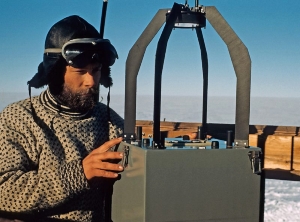Did you know that Norway has a long history of Antarctic research?For over a century, Norwegians have been doing research in Antarctica. It started with Carsten Borchgrevink, who outfitted an expedition team consisting of Norwegians and scientists in 1898. The expedition received its financing from England.

As early as in the 1920s and 1930s, Norwegians were pursuing extensive research in Antarctica, mostly during expeditions that combined whale hunting and science. After World War II, there was greater emphasis on scientific activity, and two milestones of Norwegian Antarctic research were attained: the joint Norwegian-British-Swedish Maudheim expedition of 1949–1952, and the founding of “Norway Station” in Dronning Maud Land (1956–1960) in conjunction with the International Geophysical Year 1957–1958. Norway was also involved in establishing an international body, the Scientific Committee on Antarctic Research (SCAR) – and was quick to ratify the Antarctic Treaty in 1959. The Norwegian Polar Institute has mounted expeditions to Antarctica regularly since 1976. NARE (Norwegian Arctic Research Expeditions) is an expedition support framework that facilitates effectuation of all Antarctic research funded by the Norwegian government. The chief aim of NARE is to gather information that will improve our understanding of natural and human-induced climate change. The research projects focus on biology, glaciology, palaeoclimatology (climate history), physical oceanography, and environmental monitoring. In 1989–1990, a Norwegian research station was built in Dronning Maud Land. At first, Troll was a summer station, but was converted and inaugurated as a year-round station in 2005. Most NARE activities are located to the South Atlantic sector of Antarctica, specifically Bouvetøya, in the eastern part of the Weddell Sea, and in Dronning Maud Land. |
South Pole 1911–2011 is an informational outreach project run by the Norwegian Polar Institute
Contact person:


